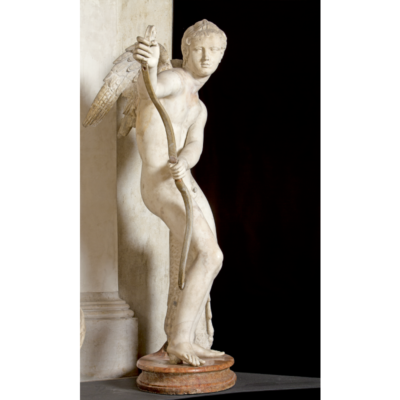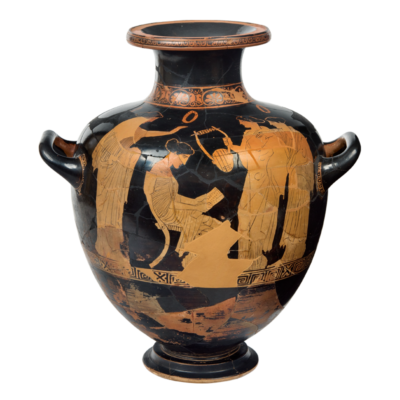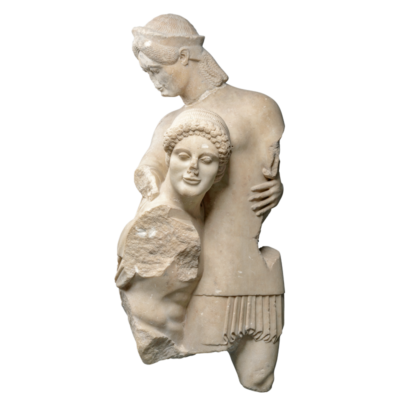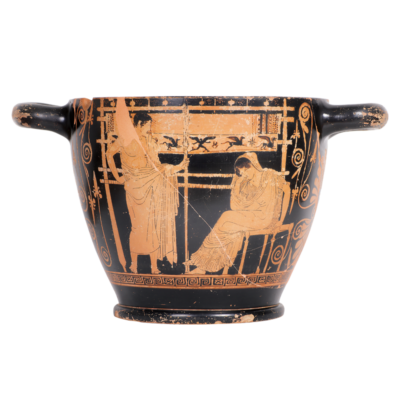Kore

Marble statue of a Kore, known by the sobriquet ‘Chiotissa’ (Chian Maiden).
From the Acropolis of Athens. Ca 510 BC. Athens, Acropolis Museum Ακρ. 675.
© Hellenic Ministry of Culture and Sports/Acropolis Museum.
Photograph: Sokratis Mavrommatis.
Small marble statue of a Kore, from the Archaic Period.
The small statue depicts a young girl looking at us straight on. Her form seems to exude all of the freshness of youth.
Her serene features, sweet grin, slender body, rich ornamentation, elaborate hairstyle, and refined clothing suggest grace and purity.
The female ideal of kalokagathia is perfectly imprinted in the image of the young Korai.
(kore, plural korai, type of freestanding statue of a maiden—the female counterpart of the kouros, or standing youth—that appeared with the beginning of Greek monumental sculpture in about 660 BC and remained to the end of the Archaic period in about 500 BC. Over this period the kore remained essentially the same, although, as in all Greek art, it evolved from a highly stylized form to a more naturalistic one. source: Britannica)
Bronze statuette of a Kouros from the Archaic Period.
The excellent rendering of the proportions, the shaping of the body, and the liveliness of the facial expression convey—in the best possible way—the virtue and ethos of the handsome young man.
From the Heraion of Samos. Ca 570 BC. Archaeological Museum of Vathy, Samos Α.01256.
© Hellenic Ministry of Culture and Sports/Ephorate of Antiquities of Samos – Ikaria/H.O.C.RE. D. Photograph: Photographic Archive of the Ephorate of Antiquities of Samos – Ikaria.
SEARCH AND LEARN
• Learn about the Korai and Kouroi of the Archaic Period.
• What is the most characteristic element in these types of statues?
• Learn about the “Archaic smile” in art.
• Discover the etymology of the word kalokagathia.
• In which city-state of ancient Greece did girls exercise together with the boys?
• What age were the Kouroi?
TOPICS FOR DISCUSSION
• Do you see any similarities in the figures of the Kouroi in terms of their movement, hairstyles, or facial expressions? If so, what are they?
• Is there a similarity in the body structure of female and male figures?
• For the ancients, nudity was the sign of a superior civilization. Discuss this in class.




